If you want to know a place, eat its calendar. Food festivals are how cities introduce themselves: part open-air dinner party, part anthropology class, part joyous excuse to stand in the street with strangers and something delicious in your hand. This is your year-long plan—twelve months of edible pilgrimages—told the way we travel: curious, light on the footprint, heavy on the flavor, and always looking for the small corner that locals love. Here are our favorite food festivals…

January: Comfort Food With a Passport Stamp
Cold month, warm bowls. Start in Japan, where winter sharpens flavors the way frost polishes glass. Hokkaido’s market stalls heap snow-crab, scallops, and buttery uni; ramen shops pull long, slurping lines into the night. Tokyo hums with pop-up food fairs all year, but in winter the tonkotsu is richer, the miso deeper, and every corner shop seems to understand what your bones need.
Then pivot to South India for Pongal Food Festival, the harvest celebration that turns whole neighborhoods into kitchens. In Tamil Nadu, temple squares sweeten with ghee and jaggery; families stir rice and lentils into steaming, cardamom-scented comfort. No tickets, no wristbands, just a thousand open doors and the realization that hospitality is a verb.
How to travel well: Bring a tiffin or reusable container. Food festival street vendors will happily fill it, and you’ll dodge a pile of single-use plastic before noon.

February: Citrus, Carnival, and the Pleasure of Being Overdressed at Lunch
On the Riviera, Menton’s Lemon Festival turns citrus into sculpture—floats stacked with oranges, archways stitched with lemons—and the town leans into marmalades, tartes au citron, and limoncello tastings that feel like sunshine has been bottled and given a nick of alcohol. Train it to Nice after: socca at a standing counter, olive oil tastings, and late-afternoon light that makes even your leftovers photogenic.
If you prefer your February louder, Carnival season means feijoada kettles in Rio and king cakes in New Orleans. In the Crescent City, the parade route is also a progressive dinner: smoky boudin, fried oyster po’boys with just enough remoulade to stain your costume, and café au lait to keep you marching.
Local move: In both places, skip the “festival special” menus and ask what the kitchen staff is eating. Then order that.
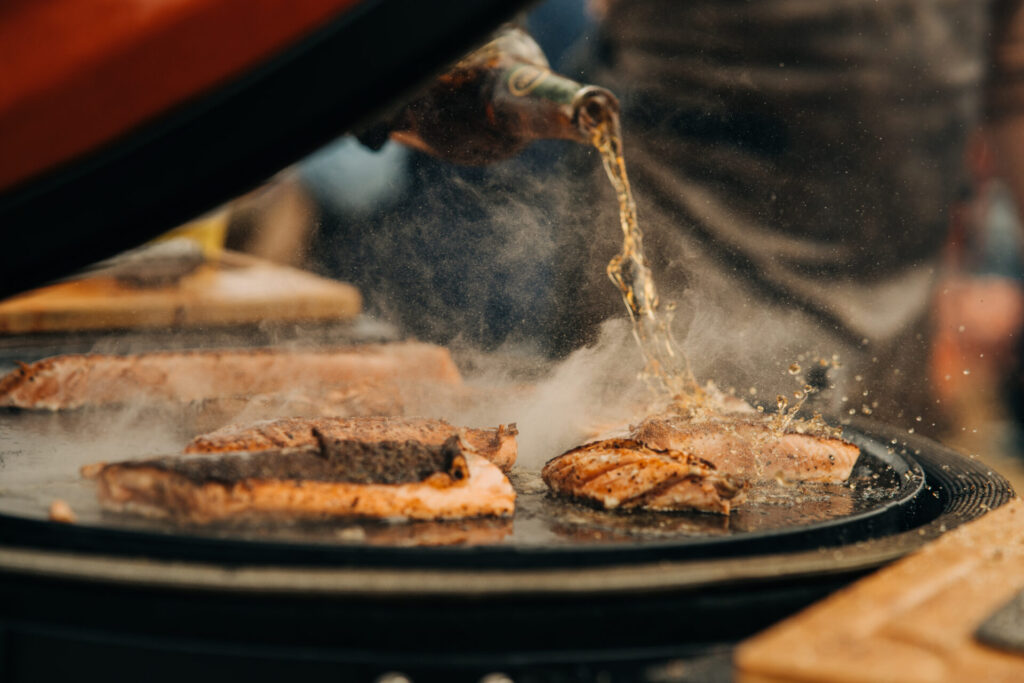
March: Big Cities, Big Tables
Melbourne Food & Wine Festival spreads across the city like a happy conspiracy—chef collaborations, laneway pop-ups, long lunches that stretch into golden hours on the Yarra. It’s a template for how to do “big” without losing intimacy: you’ll sit elbow-to-elbow with strangers and leave with three new café recommendations and a dinner invite.
Across the world, Charleston Wine + Food seasons the cobblestones with shrimp-and-grits, Lowcountry boils, and the kind of storytelling that reminds you the American South is a library of recipes, memories, and arguments. The best bites are often at the side events: small farms pouring their first batches of hot sauce, pitmasters curing ham like poetry.
Go light: Use bikes and trams. The good stuff is closer than it looks; the detours are the point.
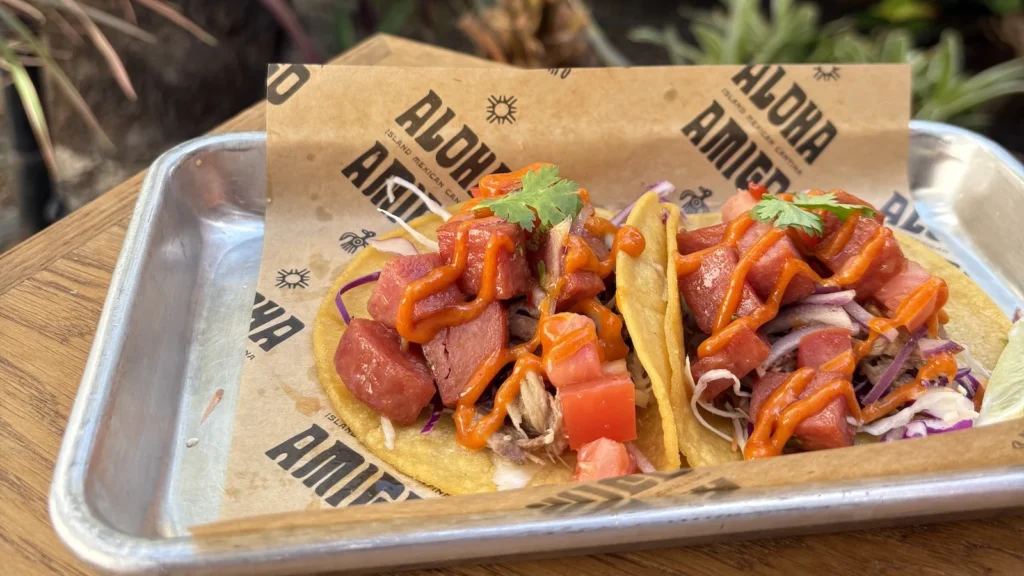
April: Spring, Sprung, Sauced
“Asparagus” is April’s first word in Germany and the Netherlands—white, fat, and cooked simply with butter and new potatoes. Farmers’ markets snap awake. In Hawaii, the Honolulu Spam Jam closes Kalākaua Avenue for a uniquely local feast where chefs go high, low, and gloriously sideways with the island’s favorite pantry icon. Call it culinary anthropology with palm trees.
Back in Southeast Asia, Songkran turns Thai cities into waterparks—but the real party is in the food courts and street corners: khao soi that tilts toward turmeric, green papaya salad pounded to order, mango sticky rice that tastes like the start of a long friendship.
Respect the line: If a stall has a queue of grandmothers, accept your fate and get in it. They know.
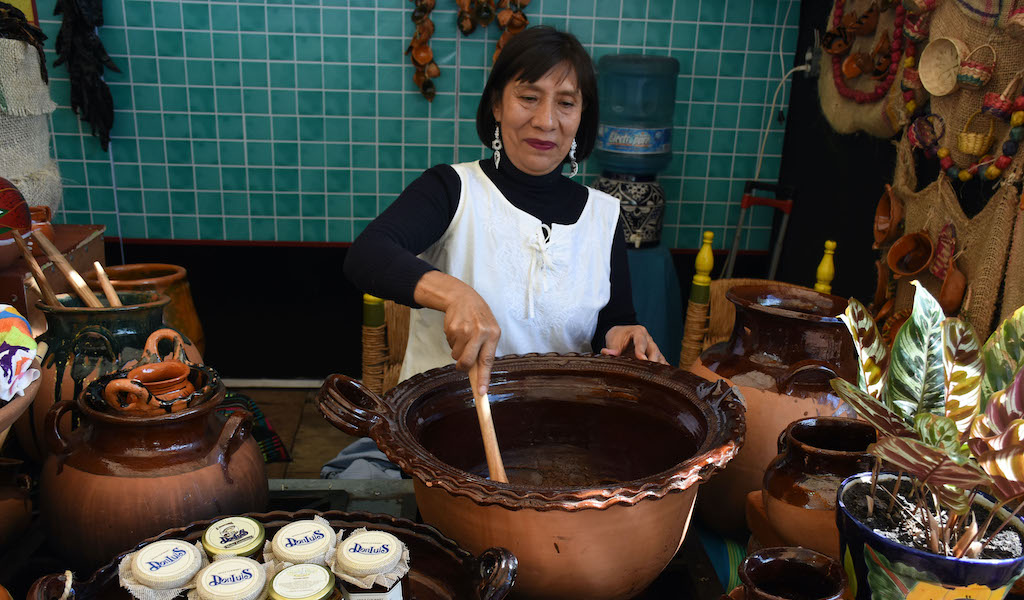
May: Green Markets and Garlic Perfume
Late spring is for foraging and first fruits. In Italy’s north, markets blush with peas, artichokes, and strawberries; trattorie lean light: vignarola in Rome, fava beans with pecorino in countryside towns where lunch is still nonnegotiable. Lisbon’s sardine season wakes up, grills hiss on stoops, and the first vinho verde of the year does what it always does—turns a Tuesday into a holiday.
Over in Mexico City’s south, San Pedro Atocpan’s Mole Festival in Milpa Alta spotlights sauce as cosmology. Stalls offer moles so dark they drink the light, or green and herb-bright like morning itself; you taste cinnamon, nuts, peppers, chocolate, ten grandmothers whispering at once. Take a jar home and carry a piece of the city into your kitchen.
How to be good company: Ask permission before photographing cooks. Compliments translate; so does buying a second plate.
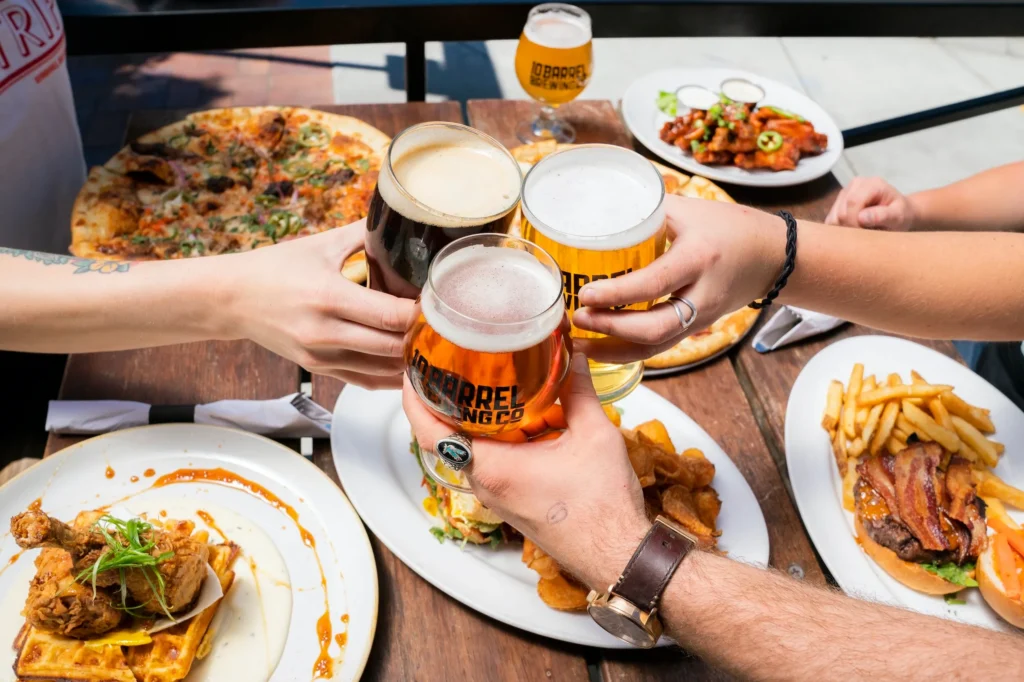
June: Pizza, Parks, and a Thousand Outdoor Tables
Naples in June is a sermon on the subject of pizza. Whether you time it for the city’s massive pizza festival or simply follow the scent of wood smoke, you’ll eat disks of char and softness that redefine simple. The genius isn’t just the dough; it’s the tempo—fast, convivial, unpretentious. Then hop north: Taste of London spreads through Regent’s Park with stalls from the city’s kitchens, a grazing passport that will convince you London is one of the best places on earth to be hungry.
If you’re a grape person, early summer in European wine regions is less about tasting notes and more about the picnic: goat cheese, cherries, crusty bread, and a bottle you swear you’ll remember the name of.
Train truth: London–Paris–Lyon–Turin by rail is a rolling, low-carbon lunch. Pack a fork.
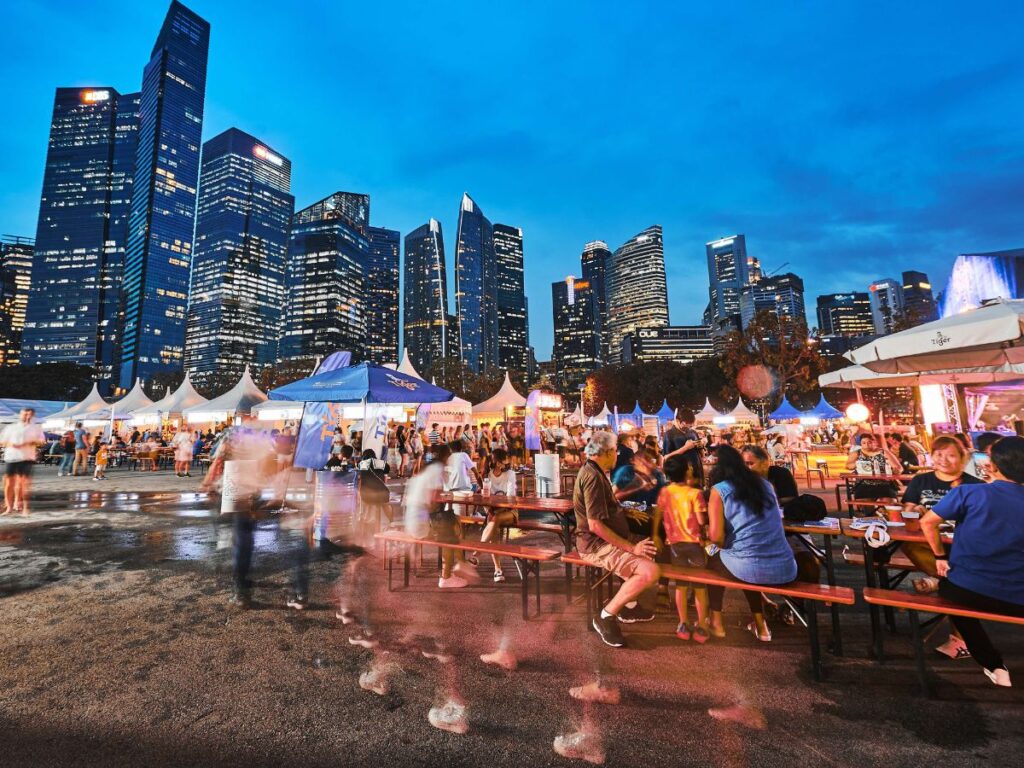
July: Shells, Smoke, and Street Night
Singapore Food Festival turns an entire city into a menu: hawker centers celebrating grill masters and dessert wizards; restaurants running heritage menus that replay the city’s culinary mixtape—Peranakan spicework, Malay sambals, South Indian thalis, Hainanese chicken rice that silences a table on the first bite. The air at midnight tastes like charcoal and palm sugar.
On South Africa’s Garden Route, the Knysna Oyster Festival pops with brine and Champagne, trail runs and long, lazy lunches on the lagoon. It’s a festival that feels like a weekend that accidentally lasted two weeks.
Wallet note: Hawker stalls are an inflation hack. Your best meals may cost less than your coffee.
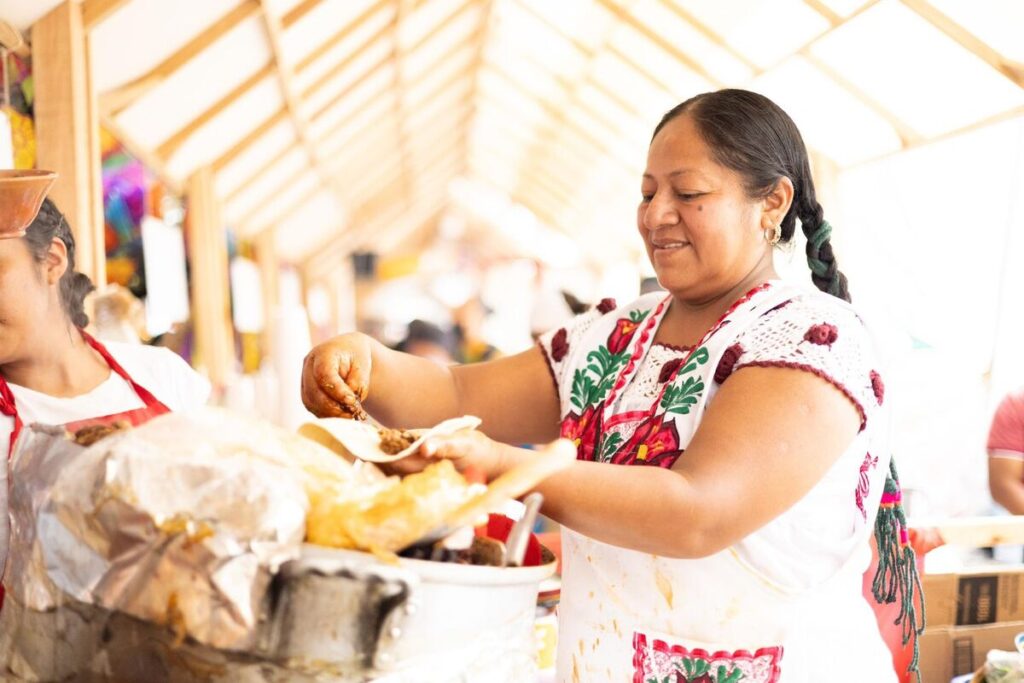
August: Fire and Feast
August is heat and appetite. In Spain, coastal grills perfume the evening with sardines and octopus; inland, the feria season means churros and sherry in the shade. Oaxaca’s Guelaguetza weaves dance, textiles, and food into one generous braid—moles again, yes, but also tlayudas that crackle, and tejate, the pre-Hispanic cacao-corn drink that tastes like a secret.
If you’re mountain-bound, the Alps serve cheese at altitude: fondue in summer is a softer, greener thing; pastures hum and every cowbell sounds like a dinner bell.
Small swap: Bring a set of lightweight chopsticks or cutlery. Stallholders will grin. So will your planet.

September: Oysters, Beer, and the First Hint of Sweaters
In Ireland’s west, Galway International Oyster & Seafood Festival ushers in native oysters with a town-wide toast. The shucking competitions are sport; the plates are poetry—oysters so cold and metallic they taste like the Atlantic dared you to kiss it. Pints follow, naturally. Across the continent, Oktoberfest in Munich is a beer festival in headline but a food festival in heart: roast chickens, pretzels the size of steering wheels, obatzda, and a thousand reasons to embrace carbohydrates.
Japan slides toward its gentlest season. Markets sparkle with early matsutake and sweet potatoes; chefs pivot to umami in sweaters and steam.
Do it right: If you drink, alternate every beer or wine with mineral water. Your morning self will nominate you for an award.

October: Mushrooms, Noodles, and the Scent of Cold
Autumn is for mushrooms, which is to say Piedmont. The Alba White Truffle Fair runs through the season like a scent you can see; a vendor saws perfume over your tajarin and you pretend not to notice your own happy tears. Nearby, Barolo and Barbaresco vineyards glow russet and gold; hazelnut groves whisper that Nutella was born as a thrifty miracle and grew up into something global.
Over in Tokyo, ramen fairs pull regional styles into one hungry park: shio that tastes like sea breeze, miso that tastes like patience, tonkotsu that tastes like rebellious decisions made at 2 a.m. You buy a ticket; you pick a booth; you understand why noodles were invented.
Truffle etiquette: Work with licensed hunters and dogs; skip “bargains.” Real aroma doesn’t need a megaphone.
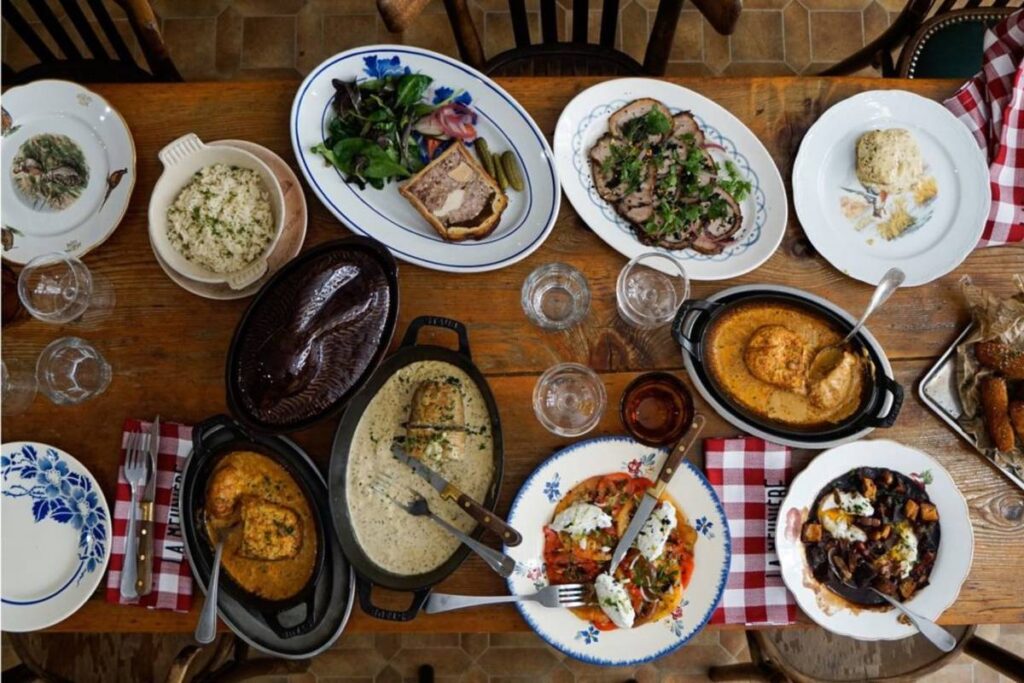
November: New Wines, Old Rituals
Beaujolais Nouveau drops on a single Thursday and the world remembers that wine can be a joke that’s also a joy. In Paris, cave à vins chalkboards wink at you; in Lyon, bouchons roast, braise, and smother everything in sauce as if to say, “winter is coming, eat more butter.” Train south to Alba if you simply can’t get truffles out of your head. (You won’t. No one does.)
Meanwhile, in Northern Mexico and the American Southwest, chile festivals glow like embers—roasters turning and squeaking, Hatch and guajillo and ancho perfuming the air. It’s the red-green argument of the Southwest, and the only losing move is refusing the second plate.
Travel math: Book the big festival day, then linger two quiet nights after. Prices drop, locals exhale, and your best meal appears unplanned.

December: Markets, Cocoa, and the Long Table
Europe’s Christmas markets have learned to do food with intent. In Germany and Austria, you warm your hands on glühwein and your heart on käsespätzle, bratwurst, and gingerbread; artisan stands replace kitsch if you pick the smaller towns and earlier evenings. In Mexico, posada season means tamales, atole, and doorways that pretend they aren’t restaurants until someone’s aunt sets down a pot and says otherwise.
If you want heat, go south: in Buenos Aires, parrillas flare for holiday gatherings; in Cape Town, December is stone fruit and seaside fish braais. The year ends smoky, sweet, and strangely hopeful.
Good guest rule: Buy the mug deposit, return the mug, keep the memory.
Food Festivals: The Unwritten Rules of Eating the World
Trust the grandma line. We’ve said it twice because it works. If the neighborhood matriarchs queue for a stall, you should, too. They are quality control disguised as affection.
Carry cash, carry patience. Festivals are organized chaos. The best tables wobble. The best bites sell out. Your plan is a sketch; your appetite is the pen.
Lead with questions. Ask how a dish is made; ask who taught the cook. You’ll often be handed a taste and a family story. Both are priceless.
Eat season, not status. A plastic chair and a perfect skewer beats a VIP tent with a sad canapé. Your social life will recover; your taste buds will send postcards.
Leave places a shade better. Bring a tote. Sort your trash. Choose locally owned inns and guides. Tip like you want the stall to be there next year (you do).
Building Your Own Edible Year
Start with three anchors—one per season—and build out. Spring could be Melbourne and a detour to Tasmania for scallops; summer becomes Singapore plus a week tracking laksa through neighborhoods; autumn is Piedmont with a train to Lyon, finishing under garlands of chestnuts and the first Beaujolais of the season. Or go coastal all year: oysters in Knysna, sardines in Setúbal, uni in Hokkaido, and a December finale at a Baltic herring market where the wind insists you earn your lunch.
We like to travel by appetite and plan by rail. Distances shrink when the journey is also a meal—picnic boards on regional trains, a thermos of tea that smells like a good decision, a seatmate who writes down the name of their grandmother’s butcher. Book your beds and a couple of headline tastings; leave the rest to the logic of smell and queue. The year will knit itself together in flavors: the oil gloss on a bowl of ramen in late October; the sunlight trapped in a lemon tart in February; the touch of truffle you chase through November like a memory.
And when someone asks, in some faraway January, how you spent your year, you can tell the truth: you ate it—kindly, curiously, and in very good company.